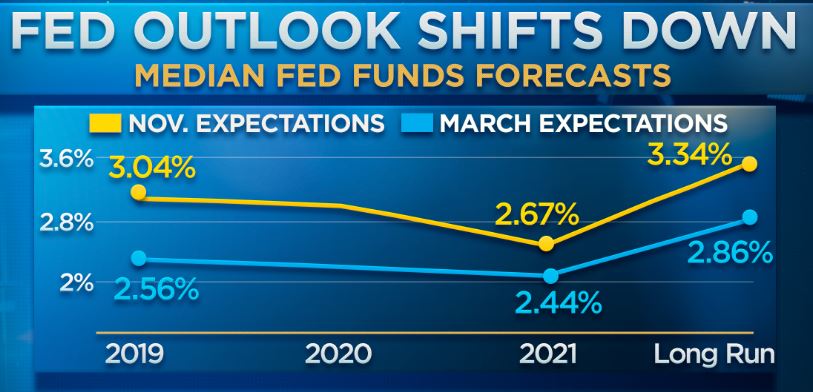U.S. economic growth is likely to slow sharply this year and next, according to respondents to the CNBC Fed Survey for March, and weaker global growth and tariffs are seen as the major culprits.
The average forecast for gross domestic product growth this year is just 2.3 percent, down from 2.44 percent expected in the January survey and a further slowing from the actual 3.1 percent year-over-year pace for the fourth quarter of 2018. Economic growth is seen stepping below 2 percent in 2020, according to the survey.

Source: CNBC
The outlook for slower growth has prompted the 43 survey respondents to lower their expectations for Fed rate hikes this year and next — barely forecasting one hike and some even seeing rate cuts on the horizon.
Asked about the biggest threats to the U.S. expansion, slowing global growth and protectionist trade policies ranked No. 1 and No. 2, respectively.
"If Trump wants to be a two-term president, he needs to make a China trade deal and start lowering tariffs across the board," said Hank Smith, co-chief investment officer of Haverford Trust. "This will cause business confidence to rise and capital spending to increase, stimulating the economy."
A weak outlook for growth abroad knocked about 40 basis points (or 0.4 percentage points) off of GDP forecasts this year, according to respondents, who include economists, fund managers and strategists. Tariffs — both those put in place by the Trump administration and retaliatory tariffs from other countries — are estimated to take another 20 basis points off of growth.




